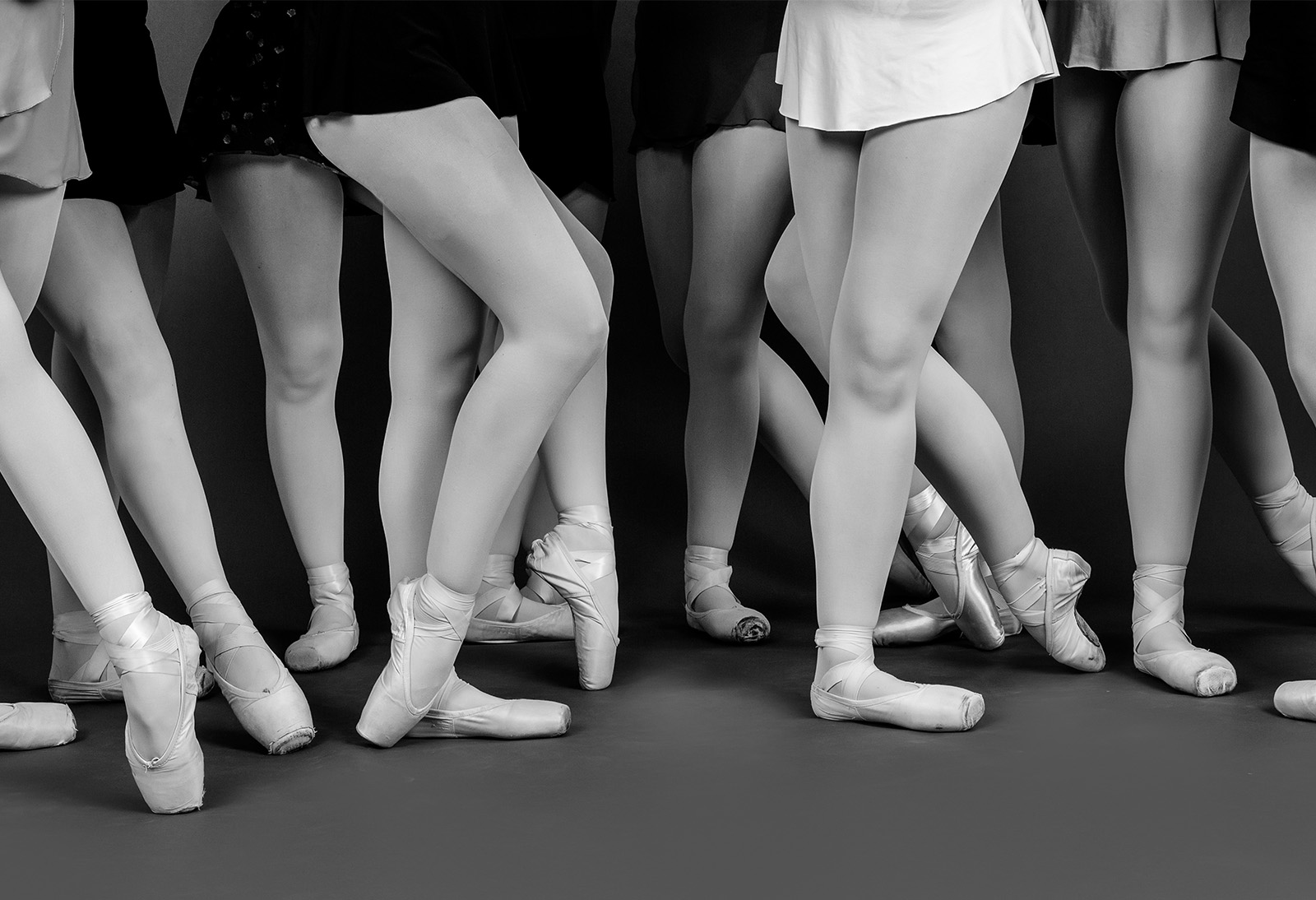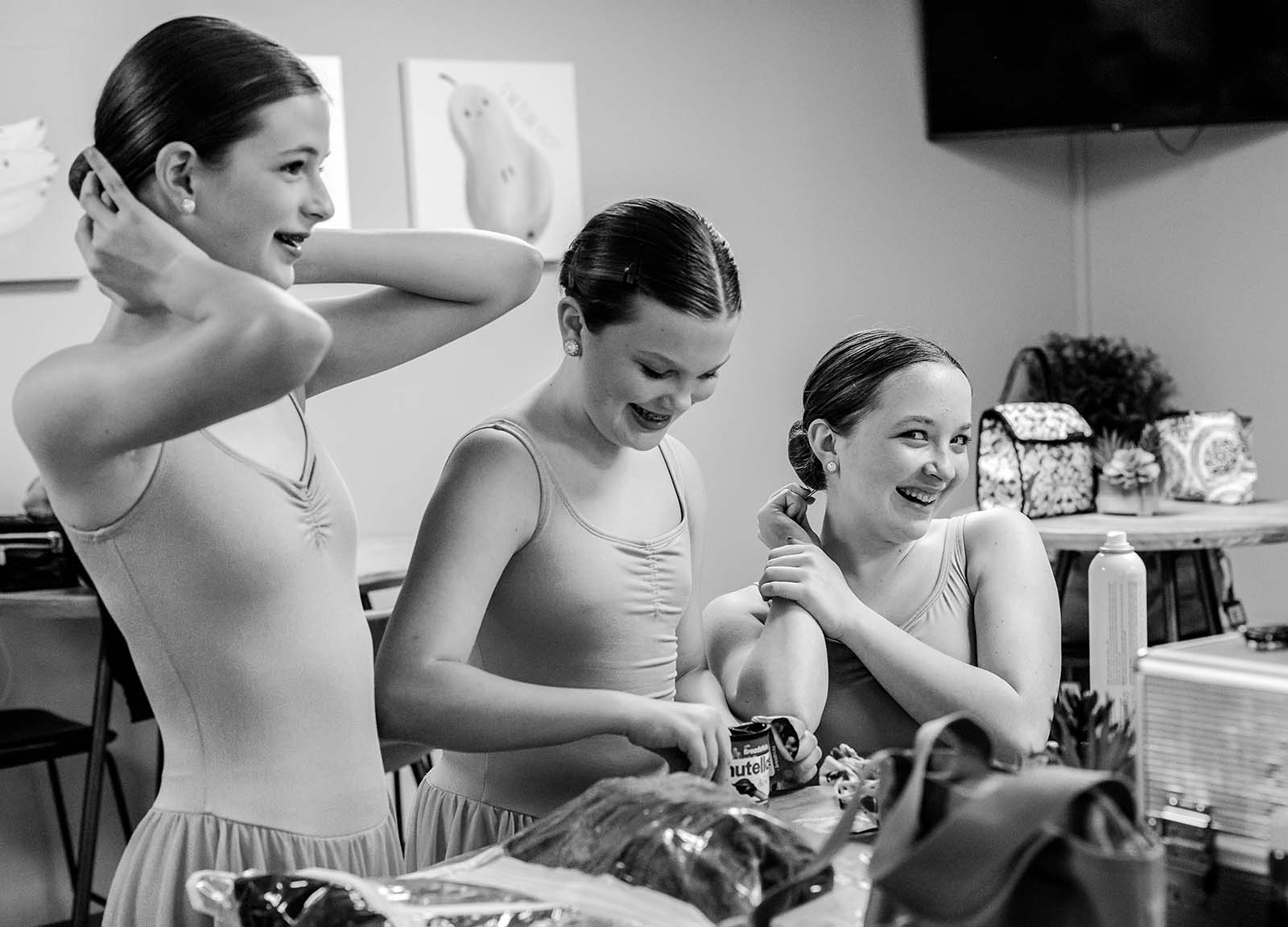When do dancers begin pointe?
It’s not uncommon for a dancer as young as 8 to start asking… “when can I go up on my toes?”, nor is it uncommon to see the little ones practicing up on their tippy toes in their own ballet shoes. Afterall, they will watch in amazement as the “big kids” are putting on their pointe shoes in the lobby and making pointe dance look so beautiful and effortless in the advanced levels. I can assure you, it is very difficult, and takes years to develop this skill, and it is something that takes serious commitment and continual practice.
We must consider physical readiness first and foremost.
I require 3 years of ballet experience minimum, to prepare the muscles as well as the dancers’ overall knowledge and terminology of dance. Steps that dancers perform without pointe shoes need to be done technically correct before they transfer these movements to pointe to ensure safety of the dancer. This takes proper instruction, practice, and muscle memory. Typically we begin the discussions in 5th or 6th grade.
Is there a recent injury or condition that may impede the dancers ability to safely move en pointe?
Pointe dance demands core strength, limb coordination, flexibility, endurance, and the ability to properly align the body, which we call placement. An injury may impact one or more of these areas, and therefore the dancer should wait until they are back to 100%. Some preexisting or anatomical conditions may make going on pointe more challenging and should be discussed with your doctor.
Muscle tone, fitness and development is a key factor for taking the step to pointe.
Every dancer will progress at a unique rate, and we cannot place a single date/age upon this important factor. Maintaining a healthy weight, getting plenty of exercise, and proper nutrition all contribute to this development, as well as attending regular ballet classes and practicing technique, strengthening, and applying corrections.
Pre Pointe lessons will help!
Pre Pointe class will give students guided exercises to help strengthen their bodies in preparation for pointe. We will use TheraBands as a tool to help strengthen ankles and metatarsals. Balance, alignment, and technical work will be repeated throughout the class and can be practiced at home.
Pointe is not recreational.
Pointe shoes are expensive, and must continually be replaced. Fittings will require a very personal and sometimes time-consuming process to find the proper fit. This investment of both time/effort and expense should not be made unless the student is very involved and passionate about ballet specifically. For the safety of the dancers, training in pointe needs to continue year-round, including the summer months.
Training on pointe is a very exciting and memorable time for dancers, marking a significant milestone for many. While it is a beautiful and challenging style of dance, it requires much time, patience, expense, and dedication. It is a special time for many dancers, but it does not mean ballet technique stops, or there are no longer opportunities for those who choose not to do pointe, or who are unable for personal or physical reasons.
– Marianne Kelley







